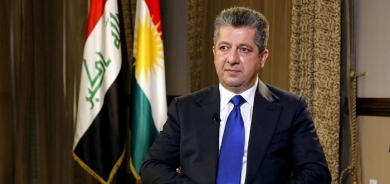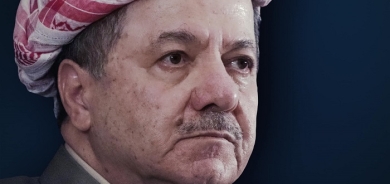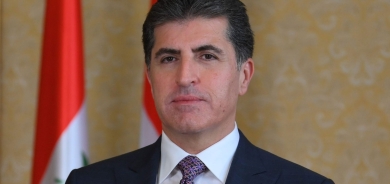What is meant to be Peshmerga

To Be a Peshmarga
Sajid and Rauf decided to write a paper about what was meant by the word Peshmarga or freedom fighter. After a few months of discussion, exchanging views and doing research, they wrote the following:
“The urge to fight back to start the revolution is created by policies of occupation and repression. Many young men had no option but to go to the mountains, to join the freedom fighters, that was where the law would be in one’s hands. Being in the mountains where one would not be intimidated, and would not be scared of death. It was where they enjoyed the beauty of the mountains. In addition, that was where the army of the occupiers were scared and could never defeat them.
“Despite climbing up and down many high hills and mountains, it was where one would be sweaty, and would not have a bath for long periods. In spite of being hungry, tired and dirty, perhaps for weeks, they felt confident, and empowered just by being there. They knew that they had their fate in their own hands, and were excited by living with continual adventures and danger. Moreover, they knew that this was where they would not be coerced by their enemy.
“In the mountains, they would fight their enemies shoulder to shoulder with their comrades that made them feel stronger and closer to each other. They baked, cooked, ate together, and guarded each other when they were at rest. That was where they were often exposed to threats and danger of death by the enemy’s air force, artillery, tank-shells and submachine guns. Every day, their bond became stronger. They defended each other and never want to leave those wounded or even killed behind. They all supported each other to fight and repulse their enemies for their own protection and survival and that was what it meant to be a Peshmarga.
“They exposed their life to the danger of being killed, wounded, disabled, or - the worst was when enemies caught any of them - to face insult, torture and being sentenced to death by capital punishment. Especially when one or more of their comrades was killed or badly wounded in the operation, that was when their real suffering begun; that was when they were angered and outraged, making them fight to the bitter end.
“To become a peshmarga not only endangered one’s own life; it also created a dilemma and trouble for the family, close relations and friends. Their homes and movements were watched by the regime, and they were often searched and brought in for interrogation. They had a continuous worry for their loved ones who, meanwhile, became a symbol of pride and admiration. If any revolutionary operation happened in their area, the families, relatives and loved ones were first target for the regime’s reprisals.
“How did it feel to be a peshmarga? It was like having total freedom, especially when they could shoot down the enemy’s helicopter gunships and aeroplanes. Freedom fighters could come face to face with their archenemies and have a go at them with whatever was at their disposal. The enormous mountain was so overpowering, it would make the enemies panic. That was where the enemy’s infantry was targeted by peshmarga snipers. The regime’s soldiers feared that every rock, shrub and tree was a sniper pointed the barrel of a gun at them. The tanks were scared; the aeroplanes did not dare go close to the mountains where they faced hidden RPG7 (rocket propelled grenade) launchers.
“The peshmargas aimed their weapons at the planes and sought to turn them into balls of fire, with pieces scattering across the sky. This would create a scene that was so glorifying. It was one of their ultimate climaxes when they saw the explosion-discharged flames light up the sky, matching the emancipated glow of their delight.
“As for the enemy’s forces, they were on unfamiliar territory and, as conscripts; their morale would never match the peshmargas’ will power. The peshmargas would fight with such a loving intent to avenge those executed or tortured to death in Qasri Neyhayia (the ‘Palace of the End’), in Baghdad. Anyone taken there would never come out alive. That place was worse than the police and army centres in Mosul, Kirkuk, Erbil, Slemani and other places.
“The urge for retaliation gave them strength and courage to fight, and not care about hunger, heat, and freezing weather when the mountains were covered with snow. They wanted to fight and were vigilant day and night. Those who saw their comrades killed, shed blood and resisted the threat of death. They carried on fighting, and had nothing to regret if only their glorious names survived. Their names would remain as examples for the new generations to be proud of. Those fighters in the mountains had a will power as rigid and defiant as the enormous rocks among which they lived. It was for the sake of freedom and human rights, and for their dignity and pride that one day would be recognised”.
In one of the many revolutionary seminars held in the mountains, a veteran peshmarga said:
“When we work hard today, struggle, learn, experience, suffer, toil, that is to reap the fruit of our toiling struggle, to enable our future generations to avoid having to suffer like us. To conserve the wealth, to build on what has been achieved, to reserve energy to build the country’s future, by working hard to build on the ‘revolutionary mindset philosophy’, towards founding a more progressive and civilised existence”.
They talked about those who the regime had executed or killed those who did not give in to torture and the temptation of being hired to betray their own comrades and the country. Benjamin Franklin once said, “Those that hurt instruct”. 2.
Young people often talked about the peshmargas and seemed to want to build the most elaborate fantasies in which to live. They looked up to peshmargas, as though they were working on building palaces of liberation, without embracing the total reality.
Discipline provides the basic set of tools to solve life’s problem. These tools are techniques for coping with suffering, by which we experience the pain of problems in such a way as to work through them, and solve them successfully, learning and growing in the process. When we teach our children discipline, we teach them how to suffer and how to grow.
The path of spiritual growth is the power of lifelong learning. If this path is followed correctly, the pieces of knowledge will fall correctly into place. To understand what our experience was all about, we need to gradually develop the power of spiritual growth to build confidence and bravery, and then we conclude that it is a joyful path. An essential part of discipline is the development of an awareness of our responsibility and the power of choice.
Love can be defined as the will to extend one’s self for the purpose of nurturing one’s own and others’ spiritual growth. When our spiritual growth comes from loving ourselves, it is from our love that we elevate ourselves. Love, the extension of the self, is the very act of evolution. 3.
Falling in love involves a collapse of one’s ego boundaries and doing away with the normal sense of separation that exists between individuals. However, falling in love with one’s own country was the ultimate aim of life to obtain the spiritual growth of the individual. The solitary aim was to climb peaks that could be reached by anyone who was not frightened of giving up life.
Significant journeys would not be accomplished without the nurture provided by a successful society. Sacrifice on behalf of the growth of others results in equal or greater growth of the self. It is the return of the individual to the nurturing society from the peaks he has travelled alone which serves to lift that society to new heights. 4.
It is in the giving up of self that human beings can find the most ecstatic and lasting, solid and durable joy of life. Death provides life with all its meaning. This secret is the central wisdom of religion. The religion of one’s strong belief or philosophy enables one to stand up to resist the evil of occupation. The process of giving up self, related to the phenomenon of love, is a gradual process that formulated the spirit of being a peshmarga. 5.
Self-discipline is a self- enlarging process. The pain of giving up is the pain of death, but the death of the old is the birth of the new. The old way of life: that was the life of resignation and laziness. A true peshmaga would often say: “For us to develop a new and better idea, concept, theory or understanding means that an old idea, concept, theory or understanding must die”.
When the master builder Wasta Anwar from Halabja was arrested and accused of belonging to secret assassination cells, he stood firm against the Baathist regime. He never gave in to various types of temptation. He withstood the most atrocious methods of torture and was left in a cell to suffer from his injuries. After torturing him, they covered his body with ants and insects to feed on his wounds and make him suffer more until he died. He never gave in to torture, insult and the threat of capital punishment. For months, he was exposed to terrible physical and psychological punishment. But it was yet more painful for his interrogators when he told them, “I know all the secret assassination cells in the Halabja, Sharzour and Slemani areas, but I will never tell you anything”.
He was determined to resist, and he accepted suffering, starvation and cruelty at the hands of these fascists. He would accept capital punishment or being tortured to death rather than to give in and betray his own comrades and country. He died with the highest honour and pride. He set an honourable example for the whole community to be proud of: to never give in to threats and insults or temptations of position and wealth. That was what he proved. He truly loved what he believed in and was ready to suffer and to give sacrifice.
The best measure of a person’s greatness is their capacity for suffering. Yet, the great are also joyful as seen in the suffering of Jesus and Buddha. Self-discipline is self-caring and self-believing.
For a young man or woman to become a peshmarga did not only mean to be in the mountains, and to be ready to fight and aim at the enemy’s forehead and heart. There were also those in the towns and villages who played their part. They risked arrest, torture and death and they too were on the front line. Wasta Anwar, the Master Builder was one of them.
A young man who thought about taking that route had to weigh up his options and consider, “What is there in my life to be fulfilled?” He had to consider and reconsider, as the world was continually changing, cultures change and the way we view the world is always in a changing process.
One had to think from one’s own views of the world, one’s philosophy, religion and political perspective. There is no one in the world that does not want to live and would give in to hopelessness and death. No mother wants to lose her child. However, the quest for a life of freedom and human rights required sacrifices and martyrs, like the Master Builder who gave up a youthful and promising life in return for a magnificent death. Many would often face death as heroically as he did and one should not hesitate to make this choice, even though that would crush a mother’s heart.
Life is like a jungle of goodness and evil: struggle, fights, deceit, suffering, wealth, wisdom, art and beauty. Indeed one should consider knowledge, wisdom, dignity and beauty to be above life.
A nation survives and advances by using brains, wise policies and effort, not through cheap speeches and populist agitation like for a charity that may make some people feel good. The Master Builder, Anwar Hawramy, Ali Ghafour and many others advanced the cause of the Kurdish nation when people realised the tragedy of their martyrdom. Tragedy brings out the ideal by giving an example how to be greater, more loving and worthy than the forces of evil that can only destroy.
Alan Soka says, “inborn tendencies encoded in the DNA and they are all to do with survival of our consciousness, interaction between heredity and environment.’
Alan Soka, professor of physics, New York University, USA
As Richard Swinburn says, ‘’It is good for me if I am of use for others. Of Course, ideally, I choose to be good for others. If I voluntarily, by my action am a good for others, that is a benefit for me and it is a benefit for me if my life is used for the benefit of others. The most striking example would be that the person, who dies for his country in a just war, leading it with his hope, is to the ultimate victory. Every society recognises that, that was not merely good for others, it was a good for him that his life was of tremendous use to everybody els.’’ 6
This is a book about Social History of Kurdish Revolution in South Kurdistan between 1961 – 1991 when a group of boys born into the revolution, a few of them survives and the rest lose their life. ‘To be published soon.’
Yasin Mahmoud Aziz is a Kurdish writer. He was born in Halabja in mid 1950s. He has several publications in Kurdish and English. This article is an excerpt from his book A Few Days Life of Revolution in Halabja.

 Yasin Aziz
Yasin Aziz






